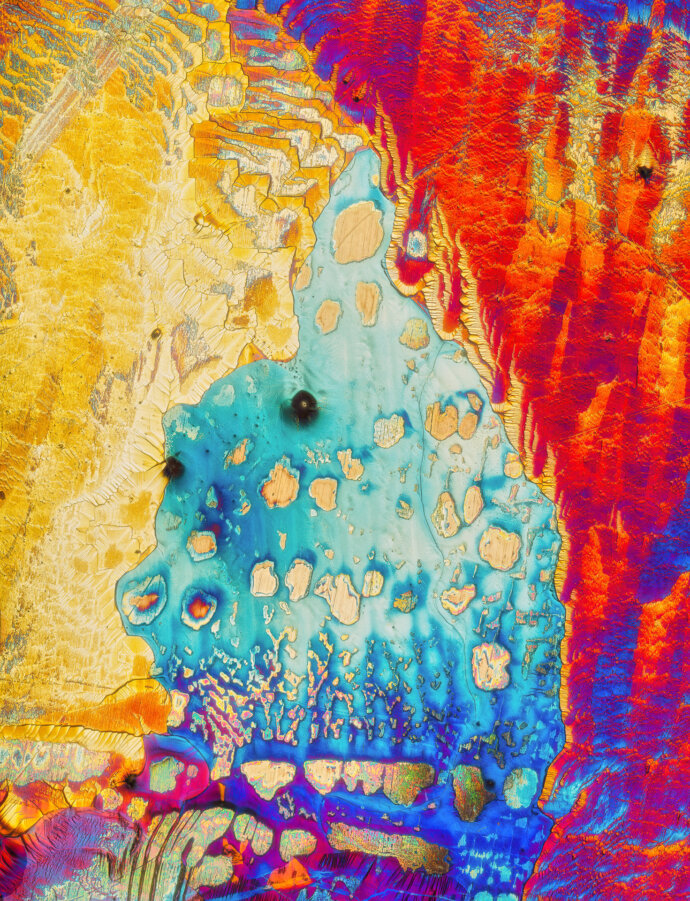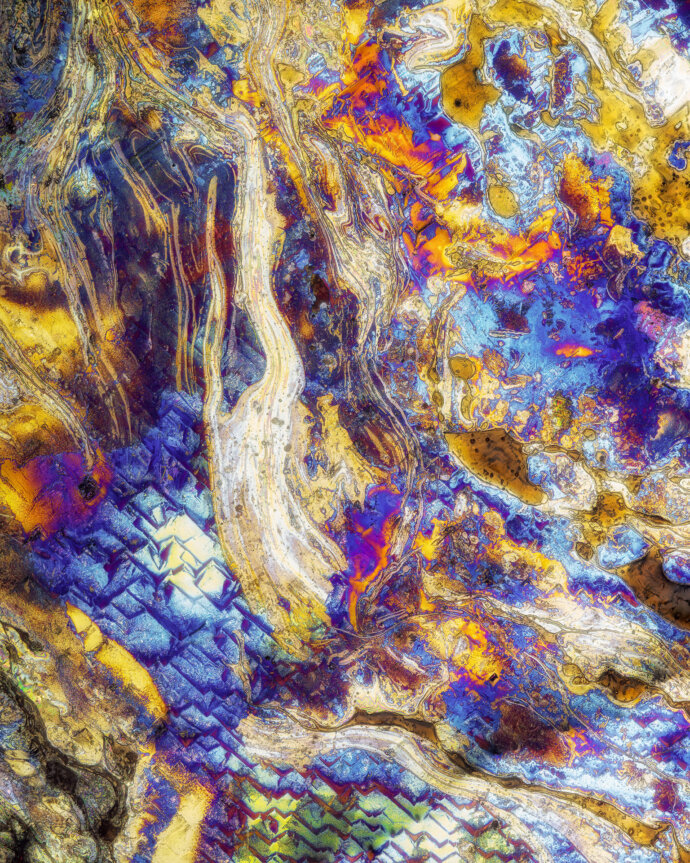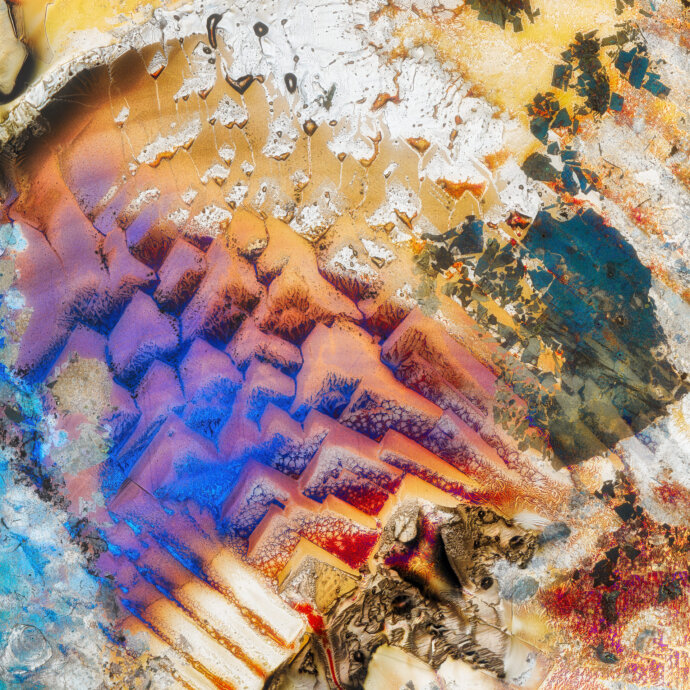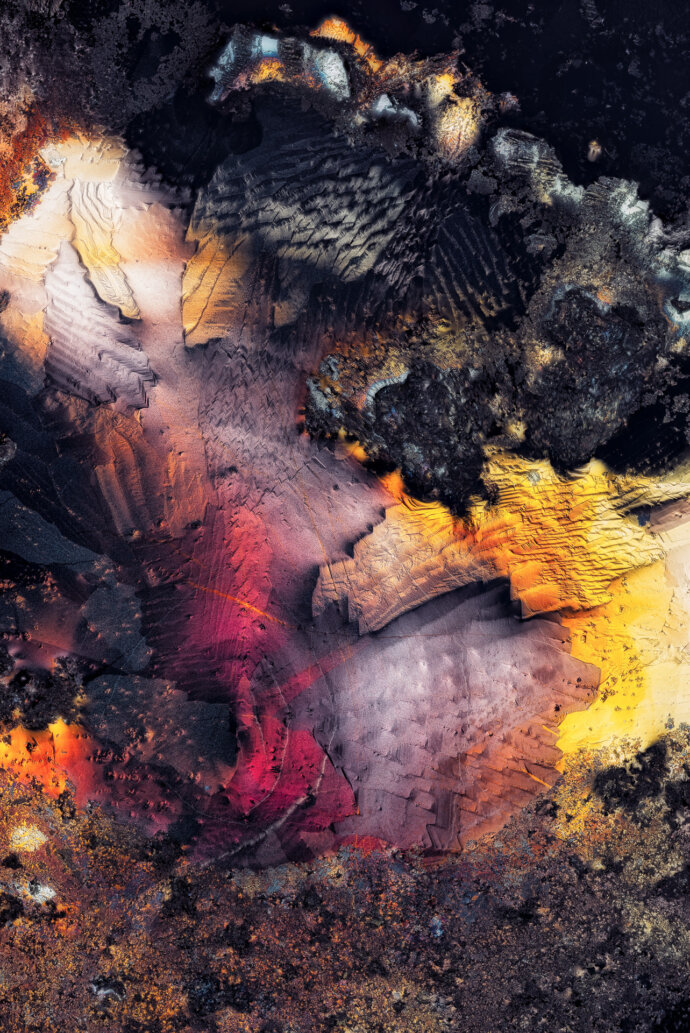Bismuth,
a chemical element with the symbol Bi and atomic number 83, is a heavy metal and is usually found in nature in sulphide ores. It is known for its extraordinary physical and chemical properties. At room temperature, bismuth has a reddish-silvery color that sets it apart from other metals.
A remarkable feature of bismuth is its low thermal and electrical conductivity, which makes it one of the best insulators among metals. Bismuth also has an unusually low density for a heavy metal and is the most diamagnetic of all metals, which means that it is very strongly repelled by magnetic fields.
Visually, bismuth is particularly impressive due to its characteristic crystal structure. When bismuth slowly cools and solidifies, it forms wonderful, geometric crystals with step-like, rectangular shapes. These structures are the result of a process known as “stair-step growth”, in which the crystals become progressively larger. The oxidation layer on the surface of these crystals refracts the light, creating a spectacular rainbow of colors reminiscent of an iridescent rainbow.
The beauty of these natural patterns, shapes and textures not only inspires artists and designers, but also fascinates scientists who study the unique properties and behavior of bismuth in various applications. In art and design, bismuth is often used to create creative and aesthetically pleasing pieces that embody the intersection of nature and artistry.


























































